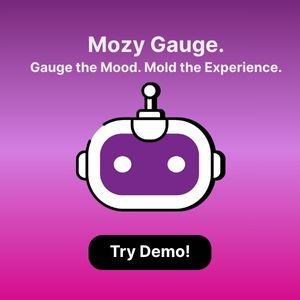


In order to navigate the world of mobile marketing, you need to learn the language. We've done the work for you, and compiled a list of the terms you need to know to get familiar with the latest mobile marketing lingo.
1. Geofencing: Geofencing allows you to target your marketing based on geographic location. Using GPS technology, you can digitally "fence" off a location and push relevant offers to app users in the area. If a user walks through your geofence radius, she will automatically be sent text, email or app notifications.
2. Push Notifications: Push notifications give you the capability to engage users at any time, even after they've closed your app. Messages sent through push notifications appear on a phone's lock screen and drive the user's interest back to your app or website.
3. Proximity: Proximity marketing doesn't describe a specific technology. Rather, it describes any system that allows you to distribute content based on a specific geographic location. This includes using beacons, geofencing, wifi-hot spots and web browsers.
4. In-App Messaging: In-App messaging allows you to shape users' experiences when they are active on your mobile app. This is a crucial aspect of any app, as it allows you to share helpful information through pop-up messages as users navigate your app content. The content shared is personalized based on their in-app activity.
5. Geotargeting: Geotargeting describes the practice of sending unique content to website visitors based on their location. Potential customers may receive different marketing content based on their neighborhood, city, or state. 6. SDK: SDK stands for Software Developer Kit. SDKs are suites of software used for app development for specific operating systems. Windows, Mac and iPhone all provide SDK's to ease the learning curve for potential app developers. Most include example code and programs to help developers master the basics.
7. Multi-Channel Marketing: Multi-Channel Marketing allows consumers to access information and make purchases through multiple channels, depending on their preferences. For example, a yoga studio can promote classes and allow purchases three ways: on-site in their studio, through their website, and via mobile app. Consumers can choose the experience that best fits their lifestyle - for example, finding a yoga studio through a website, but purchasing a coupon for classes using a mobile app.
8. Banner Messaging: Banner messages are push-notifications that briefly pop up at the top of an active phone user's screen. They are attention grabbers that require the user to tap the banner for more information before they disappear.
9. SoLoMo: SoLoMo is a catchy term that stands for social, local and mobile. It describes a marketing approach that uses technology to provide location specific, socially-driven content to consumers on their mobile devices. SoLoMo apps include popular review hubs such as Yelp and Trip Advisor.
10. SMS Messaging: SMS, or Short Message Service, is more commonly known as text messaging and is quite popular in mobile marketing campaigns. SMS is limited to 160 characters and simply contains text, not multimedia information like videos or images. See MMS.
11. Common Short Code ( CSC ): A short code is a 5 or 6 digit code such as 28766 that mobile users can send via text in order to complete a variety of tasks - opt–in to a mobile program, order a ringtone, vote for their favorite celebrity on Dancing with the Stars, or make a donation to a charity.
12. Near Field Communication (NFC): Technology that enables smartphones and other devices to establish radio communication with each other by touching the devices together or bringing them into proximity. NFC uses small chips or tags that are placed on the surface of an object allowing users to perform transactions such as payment or ticketing. The users hold their phone near the NFC tag to “scan” it, and then they receive the information embedded in the tag. NFC technology has similarities to Beacons in that they require the consumer to opt in and directly interact with the technology.
13: Multimedia Messaging Service (MMS): Text messages that include multimedia content to and from mobile phones over a cellular network. Users and providers may refer to such a message as a PXT, a picture message, or a multimedia message.
14: Location-Based Services ( LBS ): depending on the geographic area of the mobile subscriber, messages can be customized to fit the location. For example the location of the nearest favorite restaurant, gas station, or store.
15: Beacons: Small devices that transmit messages to nearby smartphones. Because the Beacon signal is relatively short-ranged, they are used for location specific advertising. Beacons use Bluetooth technology to detect nearby smartphones and send ads, coupons or product information.
